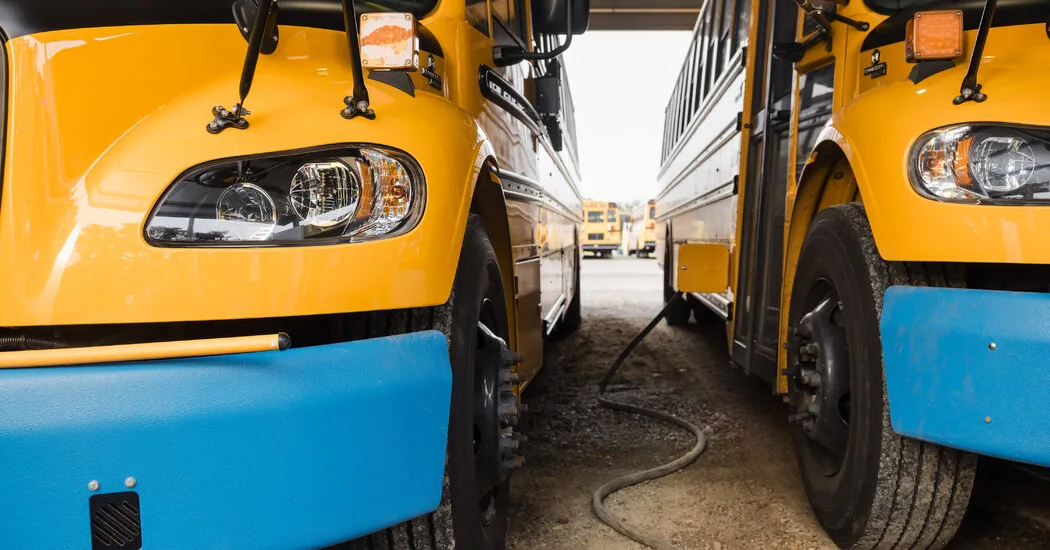How Electric School Buses Could Help Prevent Blackouts
In South Burlington, Vermont, a fleet of yellow school buses is playing a crucial role in the transition to clean energy. While transporting children is their primary purpose, these buses are also being used to store excess renewable energy and release it back to the grid when needed. This innovative concept is testing the idea that electric vehicles, often seen as a burden on electric grids, can actually serve as a buffer to soak up excess power and provide it during high demand moments. Electric school buses are particularly effective in this role because they have large batteries and spend a significant portion of the day parked. With the help of software provided by Synop, a New York firm, the buses can interact with chargers and the grid to smoothly manage the flow of energy. This is especially important as utilities across the country are looking for solutions to stabilize power plants and grids that have been prone to failure under extreme weather conditions. The Texas grid, for example, faced significant challenges during a heatwave, prompting officials to ask residents and businesses to reduce energy usage to avoid blackouts. One potential solution to this issue is to create virtual power plants by connecting thousands of rooftop solar panels, home batteries, and electric vehicles. By harnessing the collective capacity of these devices through the use of software, it is possible to prevent blackouts by tapping into these additional sources of energy. Electric school buses are particularly promising because they are underutilized during school hours and readily available during hot summer temperatures. Currently, almost every state in the U.S. has committed to transitioning to electric buses, although the number on the roads remains low. The World Resources Institute is advocating for all school buses to be powered by batteries by 2030, citing not only the environmental benefits but also the potential health benefits for children who would no longer be exposed to pollution from diesel buses. The main hurdle to achieving this goal is cost, as electric school buses can be three times more expensive than diesel buses. However, the Bipartisan Infrastructure Law has allocated funds to support the transition to electric buses, and prices are expected to decrease over time. In the meantime, school districts can offset their expenses by allowing utilities to use their buses to store energy. In South Burlington, the local school district leases the electric buses from Highland Fleets, which also supplies the charging equipment and covers the electricity bills. By drawing power from the bus batteries during times of high demand, the utility Green Mountain Power can lower the bills for electricity consumption. This network of batteries from buses, home batteries, and other sources collectively provides Green Mountain Power with access to 50 megawatts of battery storage, equivalent to a small gas power plant. While the integration of electric vehicle batteries into the grid will take time and require additional investment in infrastructure, experts believe it is a technological possibility. The involvement of utilities, regulators, and manufacturers will be crucial in overcoming legal and financial obstacles and driving down the costs of electric school buses. Overall, the use of electric school buses as energy storage units holds great promise in preventing blackouts and transitioning to a more sustainable and reliable energy system.







